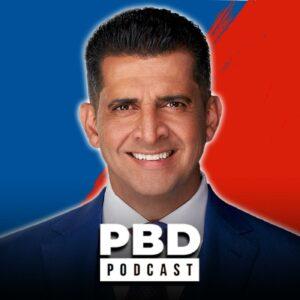Intro
In this episode of “The Peter Attia Drive,” Peter Attia interviews James Clear, the author of Atomic Habits, to discuss the process of building and changing habits. They delve into the four components of forming behavioral habits and emphasize the importance of building good habits and breaking bad ones. Listeners will gain insights into how habits shape our behaviors and learn practical strategies for learning new habits or unlearning bad ones.
Main Takeaways
Building and Changing Habits
- The four components of forming behavioral habits are broken down and discussed.
- James Clear emphasizes the importance of building good habits and breaking bad ones.
- Habits are formed automatically and shape our behaviors more than we realize.
- Listeners will learn how to learn new habits or unlearn bad habits.
Mismatch Between Immediate and Delayed Gratification
- Modern society rewards delayed gratification, which can be a mismatch with our evolutionary hardware that prioritizes instant gratification.
- Some aspects of modern society are mismatched with ancestral wiring, but some are not, such as the desire for status.
Importance of Immediate Feedback
- Immediate feedback is critical for behavior change.
- Behaviors that are immediately rewarded get repeated, while those that are immediately punished get avoided.
- Quick and meaningful feedback is necessary for behavior change.
The Role of Genetics and Training in Personal Development
- Characteristics that were thought to be mostly genetic, like strength and speed, turned out to be heavily influenced by training and choice.
- Qualities that were thought to be a choice, like grit and perseverance, turned out to have a much higher genetic component than realized.
- Grit is fit, and finding areas or skills where you’re highly interested in them can increase your perseverance and discipline.
- Genes don’t tell you not to work hard, they tell you where to work hard or inform your strategy.
The Power of Identity and Social Environment in Habit Formation
- Shift in identity leads to a more powerful place for behavior change.
- Habits are connected to our identity and the parts of our story that we take pride in.
- Being part of a tribe or group with shared norms and expectations can make a behavior feel more normal and typical.
- Social environment has a strong influence on our habits and behaviors.
The Role of Dopamine and Variable Rewards in Habit Formation
- Dopamine plays a crucial role in prediction and anticipation, not just reward and satisfaction.
- Craving or anticipation motivates behavior, not just the cue.
- Variable rewards tend to accelerate or intensify behavior.
- For a behavior to become a habit, it needs to be rewarding or have a positive emotional signal associated with it.
Strategies for Breaking Bad Habits and Building Good Ones
- Three ways to break a bad habit: eliminate it entirely, curtail the behavior to the desired degree, or replace it with a healthier alternative.
- Breaking down a bad habit into specific instances can help identify triggers and rewards to intervene in each one.
- Making good choices obvious and easy can help with behavior change.
- Small changes in the environment can add up to making a big impact.
Importance of Patience, Consistency, and Tracking Behavior
- Never miss twice: if you slip up, get back on track quickly.
- Divide the day into quarters and contain mistakes to one quarter to maintain momentum and consistency.
- Tracking behavior can lead to changes in behavior, even without a specific program to follow.
- Requires patience and consistency to see results.
The Role of Coaches and Optimal Environments in Habit Formation
- Coaches need to balance accountability with encouragement.
- Optimizing your “home court habits” can help build momentum towards healthier choices.
- The relationship between coach and athlete varies depending on the intensity of the objective.
- Great coaches are incredibly valuable and rare.
Conclusion
Building and changing habits is a complex process that involves understanding the components of habit formation, aligning behaviors with identity, and creating environments that make good habits the path of least resistance. By applying the strategies discussed in this episode, listeners can take control of their habits and shape their behaviors to achieve their desired outcomes. It requires patience, consistency, and a willingness to adapt, but the rewards of positive behavior change are well worth the effort.
